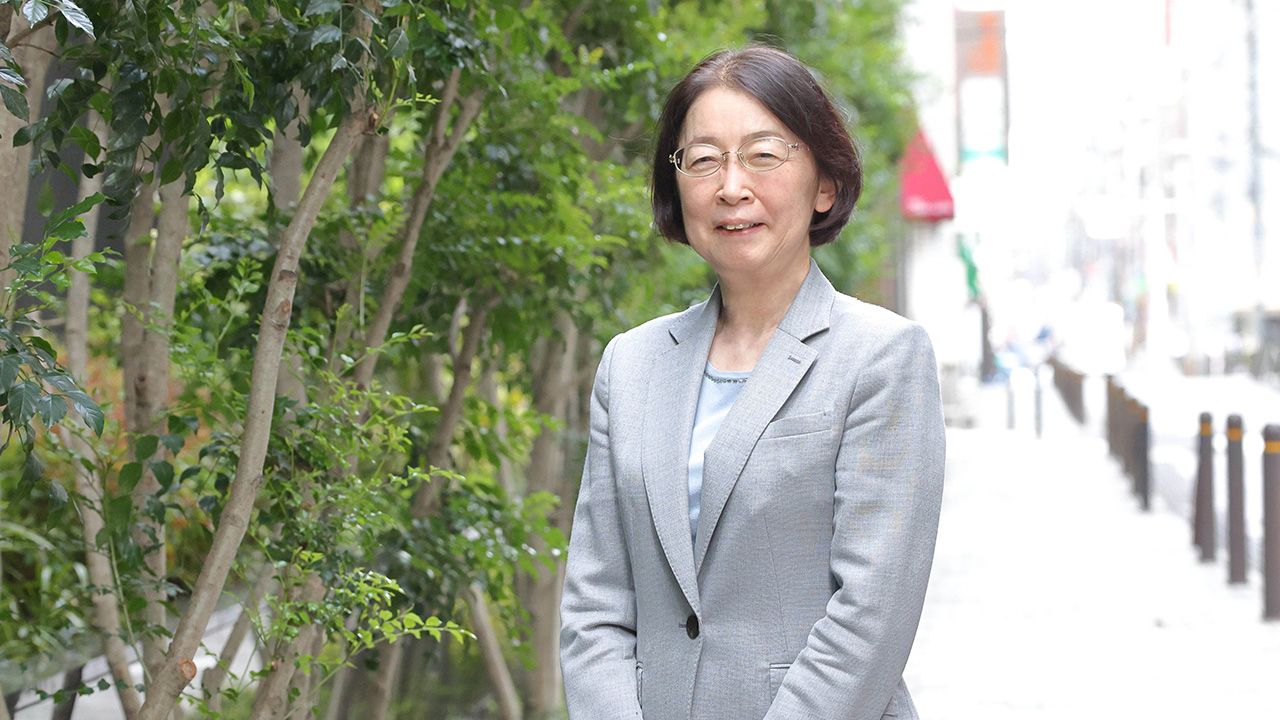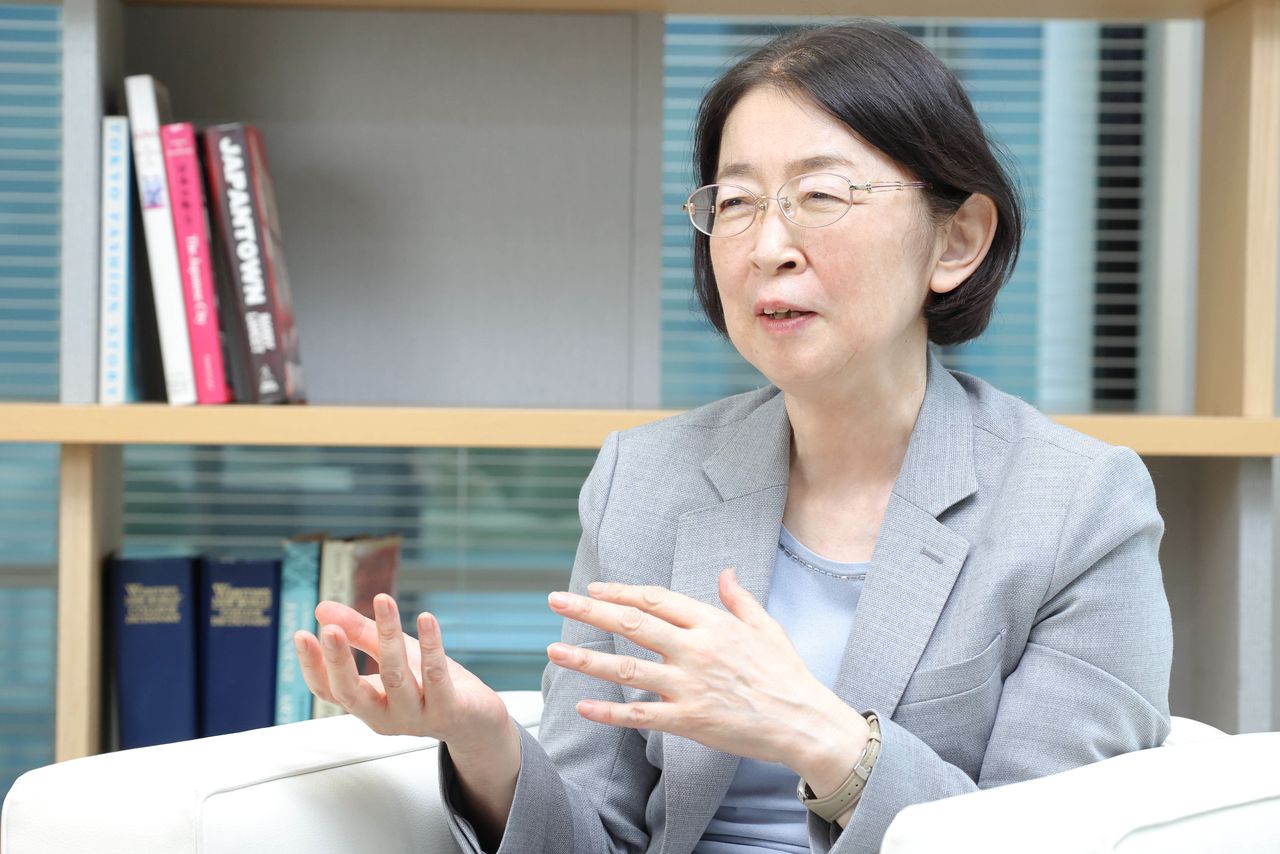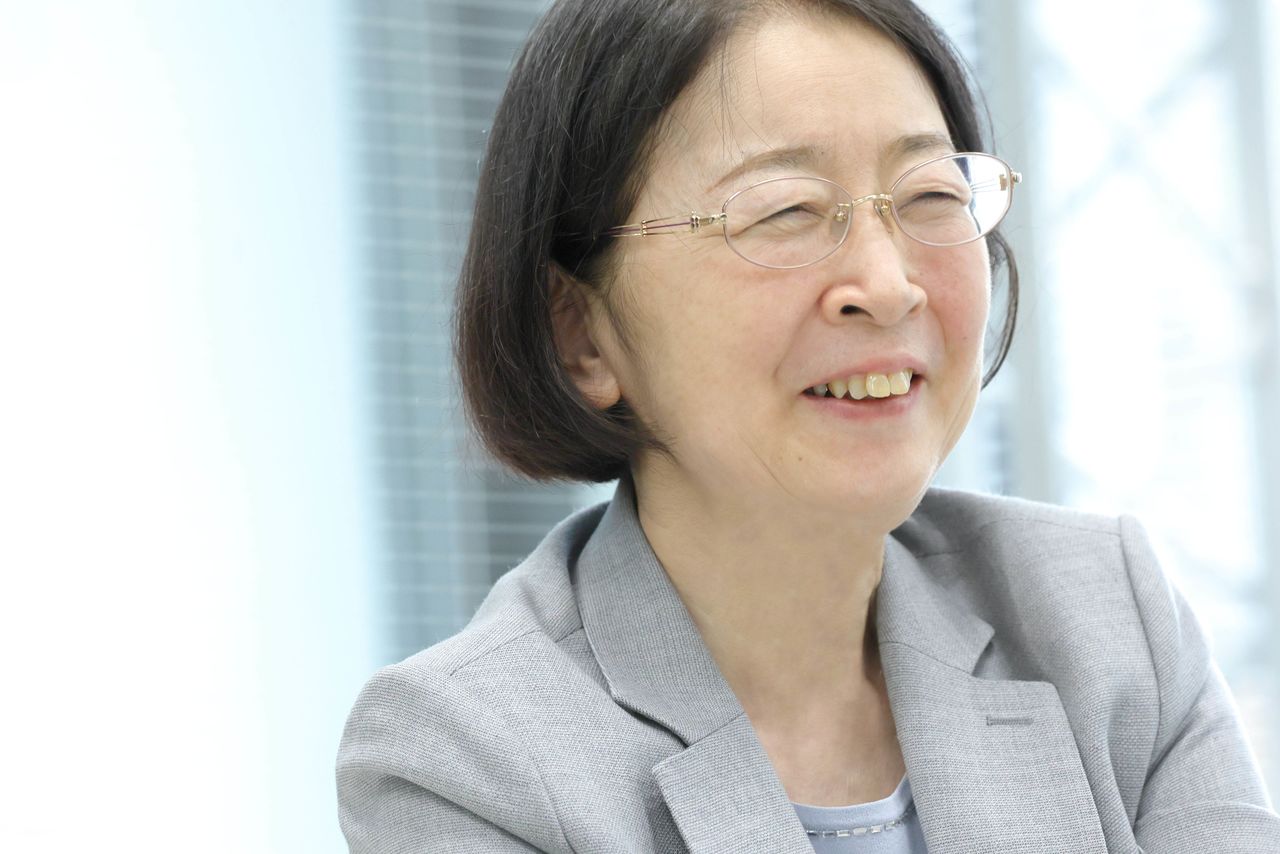
Work-Style Reform in Japan Key to Supporting Women’s Advancement and Raising the Birthrate
People Society Economy Work- English
- 日本語
- 简体字
- 繁體字
- Français
- Español
- العربية
- Русский
Workplace Reforms
Japan’s large trading houses, or sōgō shōsha, played a huge role in the country’s economic miracle, and a kind of mythos grew up around their elite male employees. The shōsha man, known for his work ethic and international competence, was seen as the epitome of white-collar success. Of course, companies like Itochu Corp. had female employees as well, but they played no more than a supporting role, typically resigning once they married or got pregnant.
In recent years, however, Japan’s sōgō shōsha have been under pressure to revamp their organizations to keep pace with a changing world. Itochu has been on the cutting edge of this trend, pioneering workplace reforms oriented to women’s advancement on the premise that “organizational diversity is essential for companies to grow sustainably.”
Muraki Atsuko, a former vice-minister of health, labor, and welfare, became an outside director for Itochu in 2016, the same year the Act on the Promotion of Women’s Active Engagement in Professional Life came into effect. By then, the corporation was already an industry leader in policies to support work-life balance and gender equality. But real change had been slow to come.
“As early as the 2000s, Itochu had set numerical targets for hiring women and promoting them to management positions,” notes Muraki. “That was pretty advanced, since it was before such policies were written into law. But progress was slow. The company hired more women, but the women ended up quitting [to marry or have children].”
The company took a major step forward in 2010, when it opened a childcare center for employees near its Tokyo headquarters and adopted a series of company-wide workplace reforms. Perhaps the most significant of those policies was “morning-focused work,” adopted in 2013. At a time when management-track employees often worked long into the night, everyone was encouraged to leave work at 5:15 pm and prohibited in principle from working after 8:00 pm. If employees needed more time to finish up their work, they were asked to come in in the morning, between 5:00 am and 8:00 am.
“The company pays an overtime premium for early-morning work, and it offers free breakfast until 8:00 am,” explains Muraki. “The policy improved efficiency and cut overtime hours substantially.” It was also an important step toward accommodating two-income families, since “men and women alike knew when they would be leaving the office and could plan accordingly.”
Documenting the Progress
In October 2021, Itochu established the Women’s Advancement Committee. Under Muraki’s leadership, the committee undertook a major survey of company conditions and internal trends relating to women’s employment and empowerment. That study revealed a number of important changes.

Muraki Atsuko speaks at a press conference in Tokyo on September 3, 2021, after being chosen to chair of Itochu’s Women’s Advancement Committee. (© Jiji)
For one thing, marriages between co-workers were on the rise. In addition, the percentage of male employees married to working women had soared from 9% in 2000 to 43% in 2021; for men in their twenties and thirties, the latest figures were 90% and 63%, respectively. It was clear that attitudes toward work and gender were shifting dramatically, especially among younger employees.
The company also found that the total fertility rate (estimated lifetime births per woman) among its female employees had soared since the adoption of morning-focused work hours. In fiscal 2021, the fertility rate stood at 1.97, more than twice the 0.94 estimated in 2010 and far above the national average, which fell from 1.33 in 2020 to 1.30 in 2021.
Although the release of those figures sparked some controversy, Muraki welcomed them as strong evidence of the efficacy of morning-focused work. “The connection was confirmed by our interviews with women who had returned to work after having a baby,” she says. “Most of them told us that the morning-focused work policy was a key factor enabling them to juggle work and child rearing. The result is that fewer women are leaving the company when they have children.”
Simply put, the system makes it easier for employees to mesh their own schedules and those of their children, including daycare pick-up times.
“Work-style reform is a necessary condition for full and equal participation by women in the labor force,” says Muraki. “You can launch a lot of initiatives, complete with numerical targets, but unless you create favorable working conditions, they’re not going to succeed.”
Sending a Message
Itochu’s decision to release its fertility data in April 2022 triggered something of a backlash on social media. Critics accused the company of overreach and worried that it was marginalizing women who could not or would not have children. For Muraki, the reaction underscored how many women today struggle with reproductive issues. But she believes that publication of the data was a vital step in communicating Itochu’s basic stance on women in the workplace.
“Until fairly recently, the workplace culture was such that a woman employee felt compelled to apologize to her superior for getting pregnant. When a company tells the world it’s proud of its rising fertility rate, it means women don’t have to apologize any more. Instead, they can expect their superiors to congratulate and support them. By publicizing its achievement, Itochu was sending an important message to its employees.”
In May 2022, Itochu took another big step forward by adopting “morning-focused flextime,” under which staff can leave work any time after 3:00 p.m. It also instituted a permanent work-from-home option, available to all employees.
How do such family-friendly policies affect business performance? So far, executives at Itochu Corp. have no cause for complaint: In fiscal year 2021, labor productivity was 5.2 times higher than a decade earlier.
“You often hear Japanese business executives arguing that not all companies can afford to adopt work-style reforms and other policies to support women’s advancement. But there are studies that show these policies lead to increases in productivity. If done properly, work-style reform can go hand in hand with improved performance.”
Unconscious Bias
Muraki will step down as an outside director in June. “For seven years I enjoyed being part of this corporate culture where people decide to do something and really follow through. Working in government, I had far too much experience with starry-eyed plans that came to nothing. Lacking hard data, it was hard to persuade people that work-style reform was the key to raising Japan’s birthrate. The fact that we were able to demonstrate the connection at this company is hugely significant.”
Unfortunately, Japan has a very long way to go in terms of empowering women in the workplace. Two decades ago, the government set a goal of having women occupy at least 30% of management positions by 2020. With the ratio still languishing at around 10% in 2020, it gave itself another decade to reach that goal. Keidanren, Japan’s big business lobby, has embraced the target as well, but the outlook is bleak.
Japan has done much to establish the legal basis for gender equality—from the 1986 Equal Employment Opportunity Law to the 2016 Act on the Promotion of Women’s Active Engagement in Professional Life—but progress in the real world has been disappointing. In the World Economic Forum’s Global Gender Gap Report, Japan consistently ranks near the bottom in gender parity. In the economic sphere, it scores especially poorly with regard to professional leadership, and it falls below the global average in earned income.
Muraki cites three structural factors behind the lack of progress. One is traditional labor practices, which call on regular corporate employees work long hours and accept transfers to remote locations. The second is a lack of daycare services and similar facilities. (Although the waiting lists have shortened in recent years, many parents still have trouble finding outside care for their young children.) A third factor is Japan’s lifetime employment system, which stresses continuity, shuns mid-career hiring, and discourages generational change.
Entrenched social and cultural norms also play a role, says Muraki. The attitudes of male managers toward women were shaped by their own formative experiences in the family and the workplace.
“Business executives lobbied vigorously against passage of the Equal Employment Opportunity Law,” recalls Muraki. “They aren’t as vocal in their resistance nowadays, but they still have an unconscious bias rooted in the old social model. Once women occupy between 30 and 40 percent of management positions, that mindset will change. We need to get busy on work-style reform and improvement of the social environment, such as child-care services, and push for a big boost in the ratio of women managers.”
Shedding the “Old Men” Image
Even while mired in outdated attitudes, Japanese executives hate for their companies to be pegged as old-fashioned or male-dominated.
Muraki was attending a meeting of another corporation’s advisory board when one of the advisors casually characterized the firm as an organization dominated by ojisan (a mildly disrespectful term for older men). The executives’ faces froze.
Muraki laughs. “All the executives there were older men, and all the advisors were men except me. Even so, it was very clear that they didn’t want their company to be seen as an organization of ojisan.”
Starting this year, Japanese businesses are being called on to include “human capital” metrics in their public disclosures. Listed companies are now required to report such data as the ratio of management positions held by women, wage disparities by gender, and the percentage of men making use of child-care leave. Muraki warns that companies that fail to empower women will soon be branded as old-fashioned ojisan businesses and will be shunned by young talent. On the other hand, she believes that human-capital disclosures will greatly benefit companies that make real progress on work-style reform, improving their brand image and helping them recruit young talent. (Itochu consistently ranks among the most popular employers among college graduates.)
Investing in Japan’s Future
With labor shortages looming, Muraki believes that industry needs to play a more active role in efforts to boost the nation’s birthrate and stem population decline.
“Traditionally, companies have recruited young people after they graduated and only then assumed responsibility for their development. But unless society as a whole supports families by building a system to nurture and educate children, companies are going to run out of people to recruit,” she warns. “Growing disparities in education will also have an impact on the quality of human resources. As the potential beneficiaries of population growth, businesses need to invest in childbirth, child rearing, and education in order to reduce the costs that will be passed down to future generations.”
Workforce homogeneity is a luxury Japan can no longer afford, insists Muraki. “It’s not just about closing the gap between men and women. We need to create an inclusive environment where people of all kinds, including the disabled, can realize their full potential.”
Muraki recalls the slogan “Today individuality transcends gender,” used in a 1985 poster promoting the new Equal Employment Opportunity Law. “We solicited ideas from all the ministry employees,” she says. “This one was submitted by a young woman who had only recently joined. With its non-binary theme, it was a slogan ahead of its time.
“For many years the culture of Japanese corporations, from employee training to work styles, has been rigid and uniform. Nowadays many young couples want to share the responsibilities of work and child rearing, and in the years ahead, more and more people will be caring for their elderly parents. If we continue to insist that everyone do things the same way, we’ll end up wasting vital human resources. But if companies adopt flexible systems that allow employees to choose the work styles suited to their circumstances and still receive fair treatment, Japanese society will change.”
(Originally written in Japanese by Kimie Itakura of Nippon.com. Banner and interview photos by Hanai Tomoko.)
gender Fertility rate work-life balance population decline gender gap women’s empowerment

